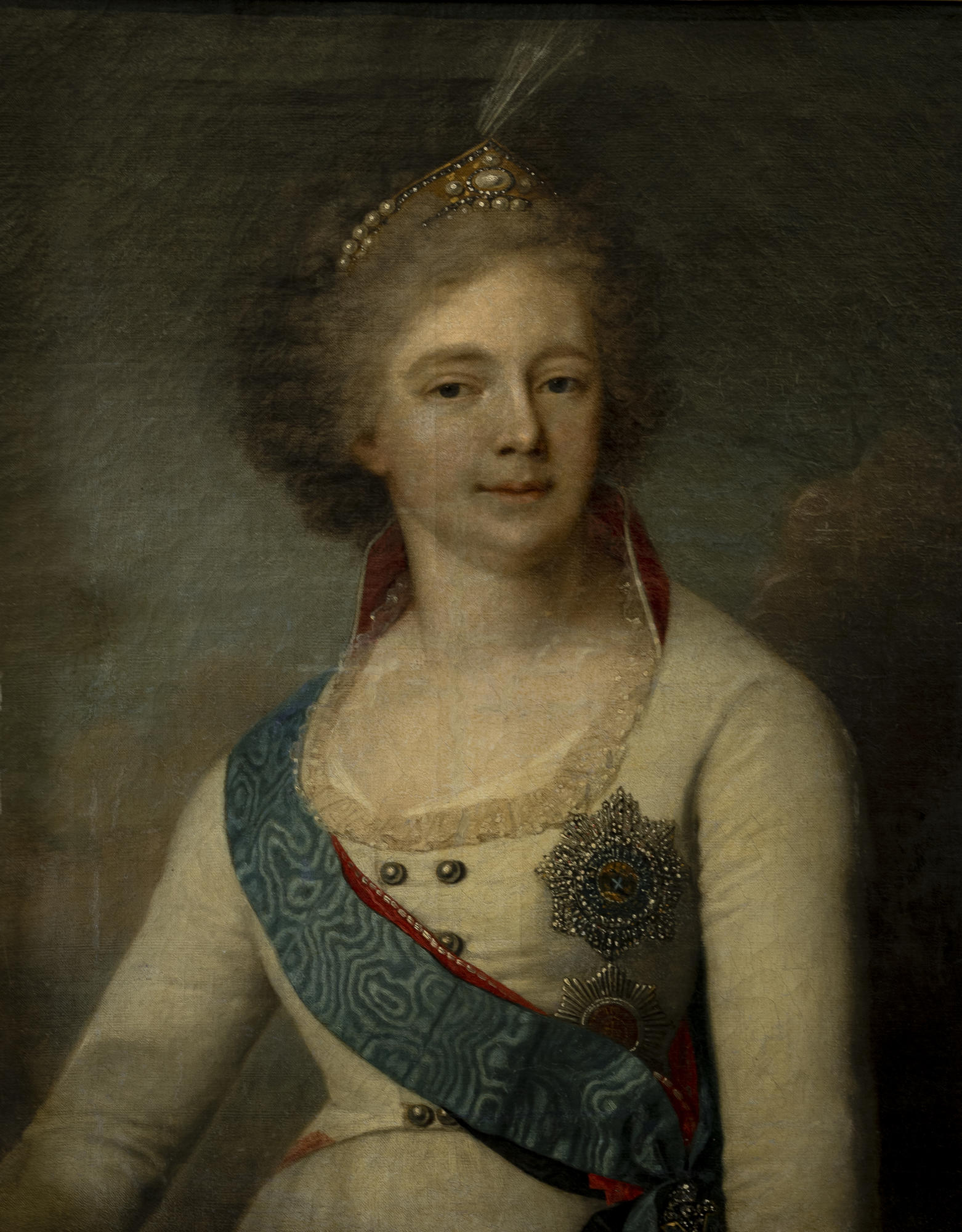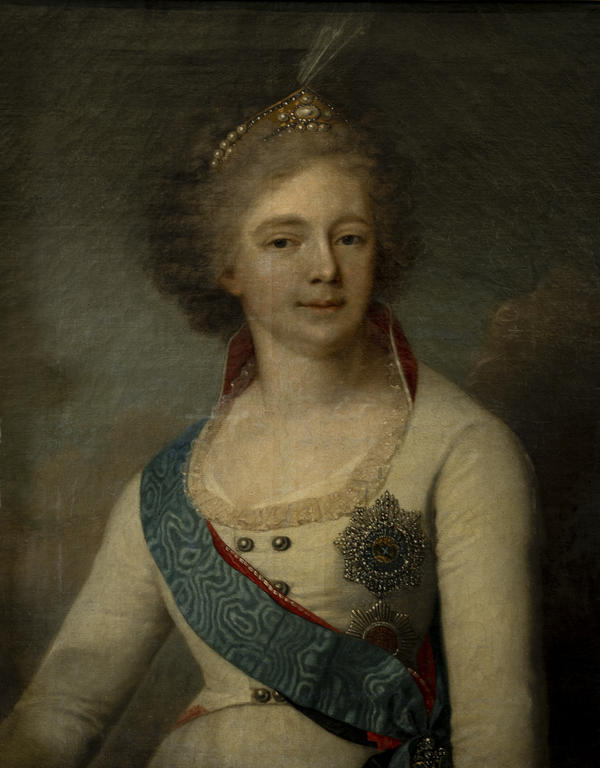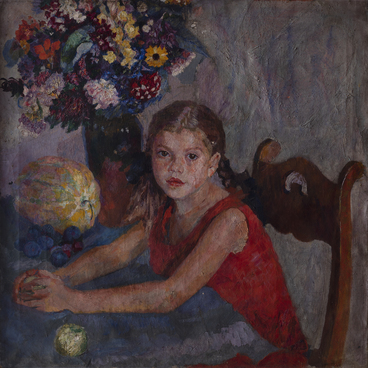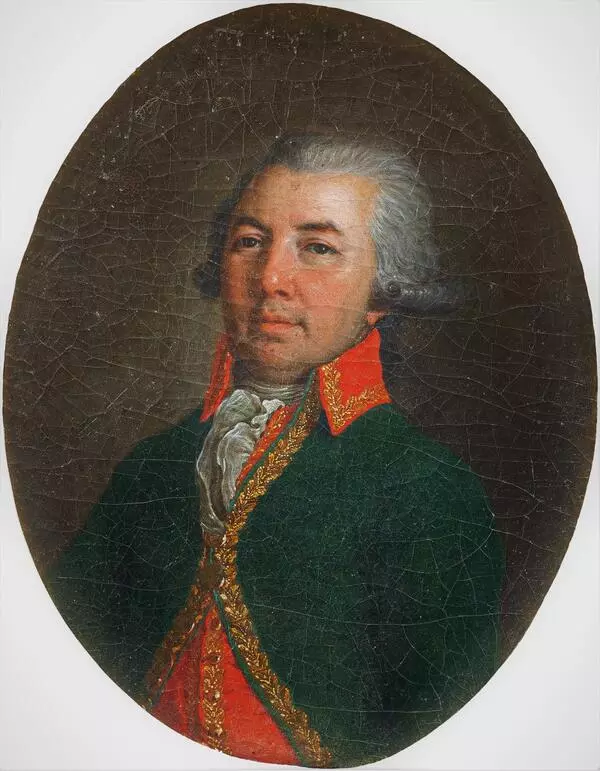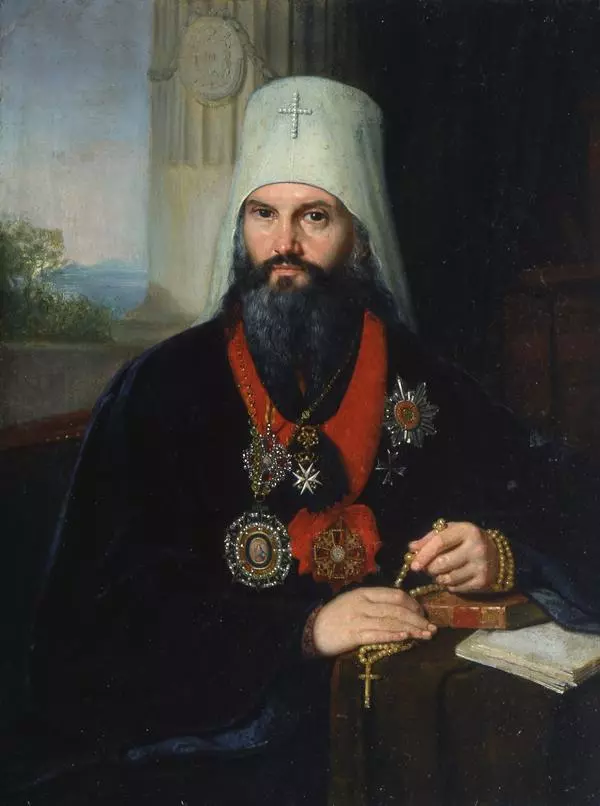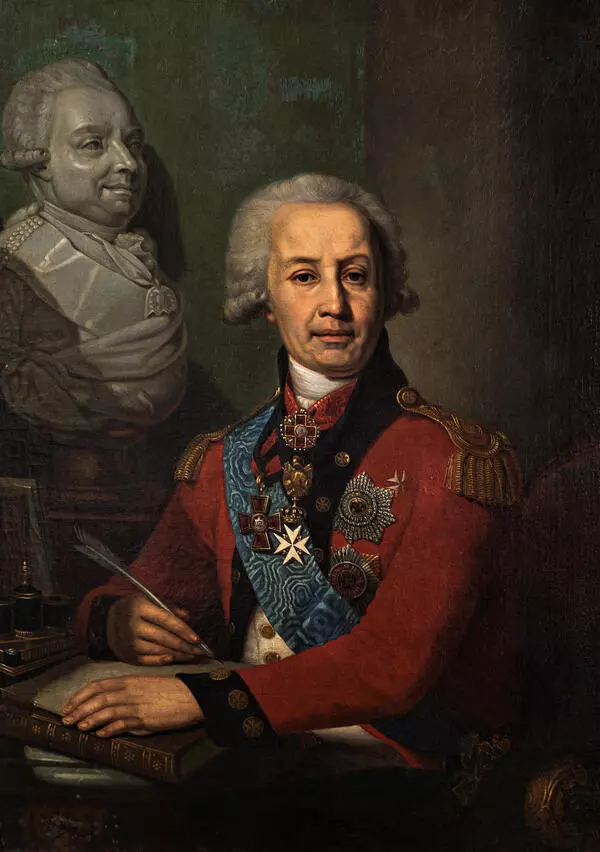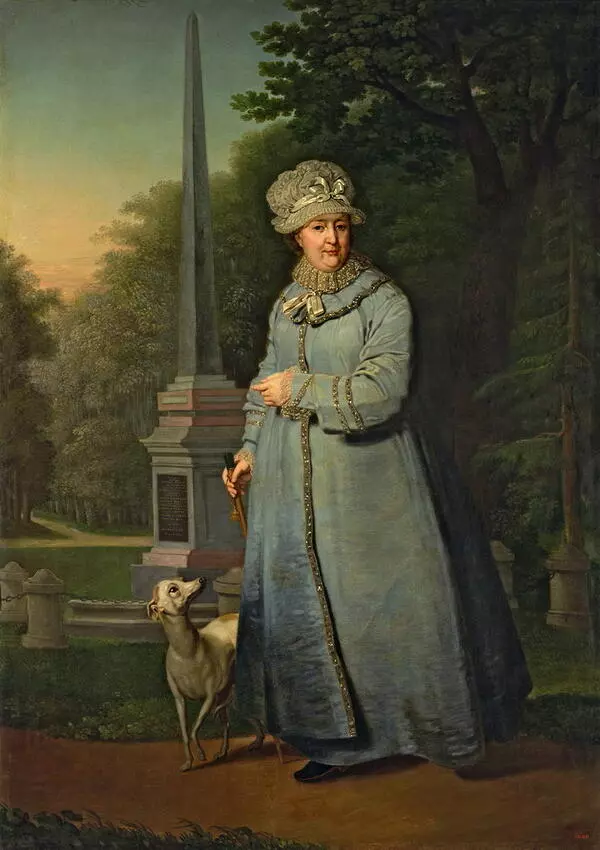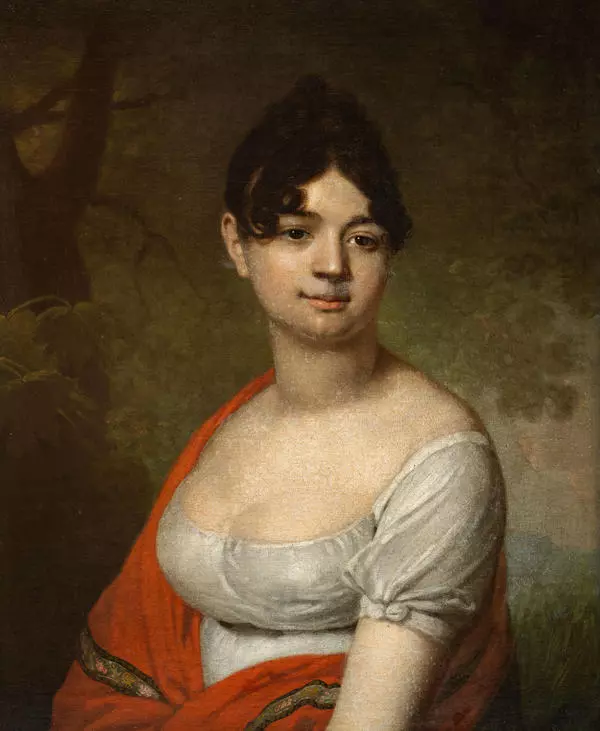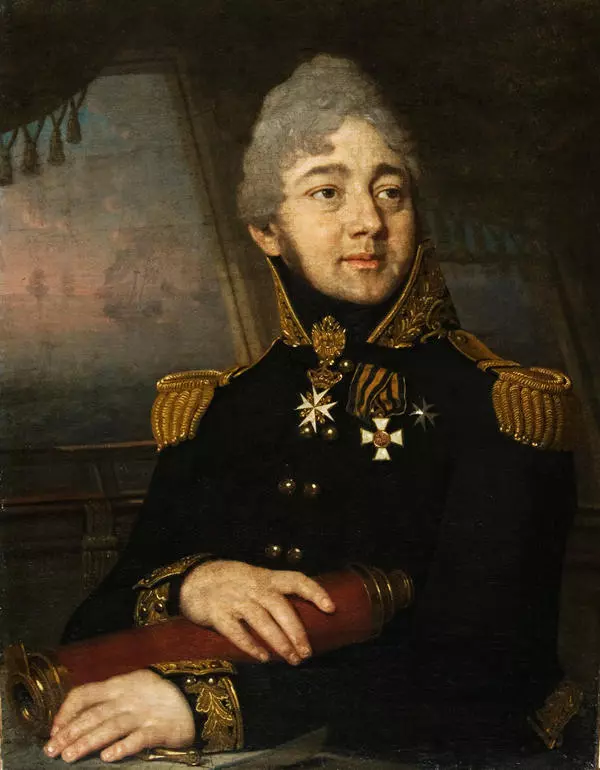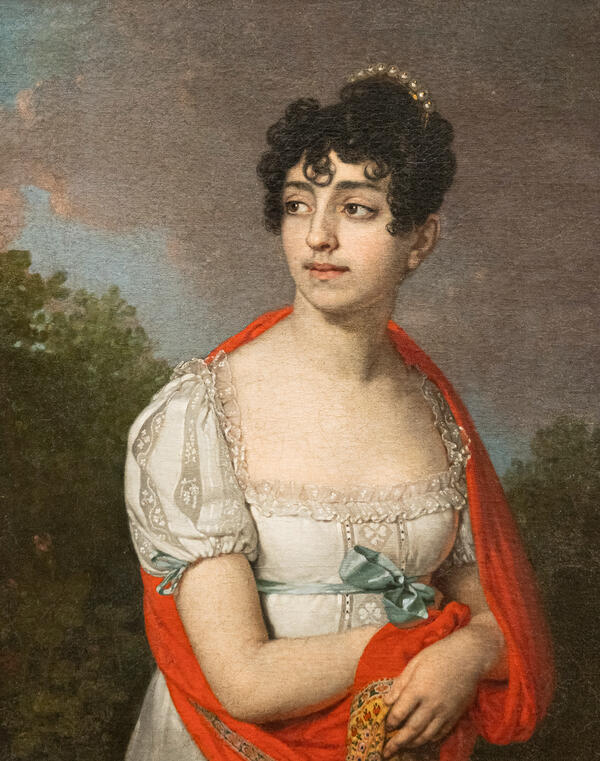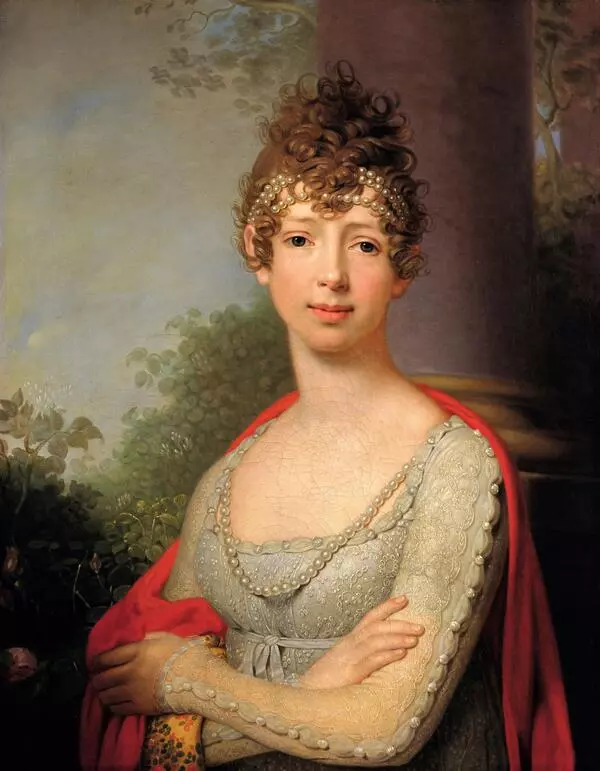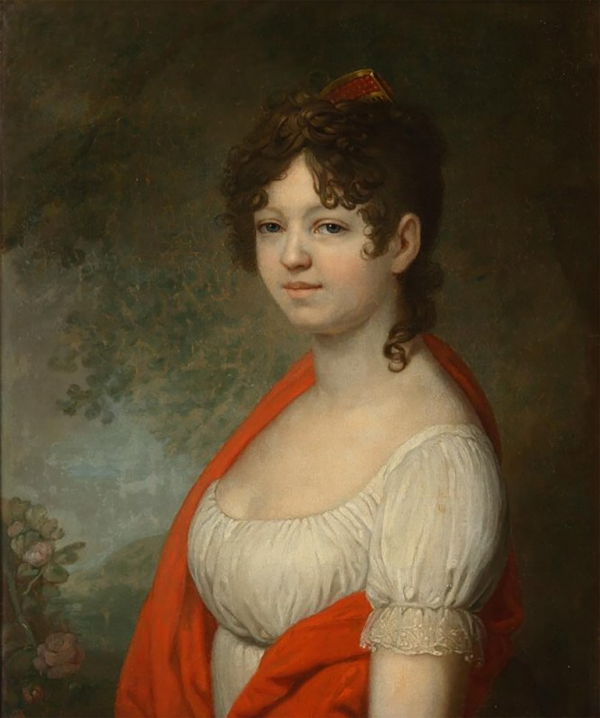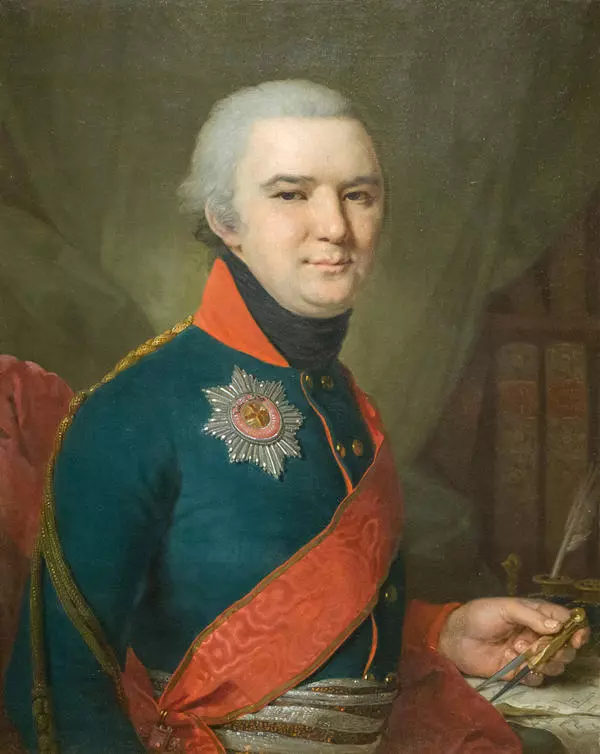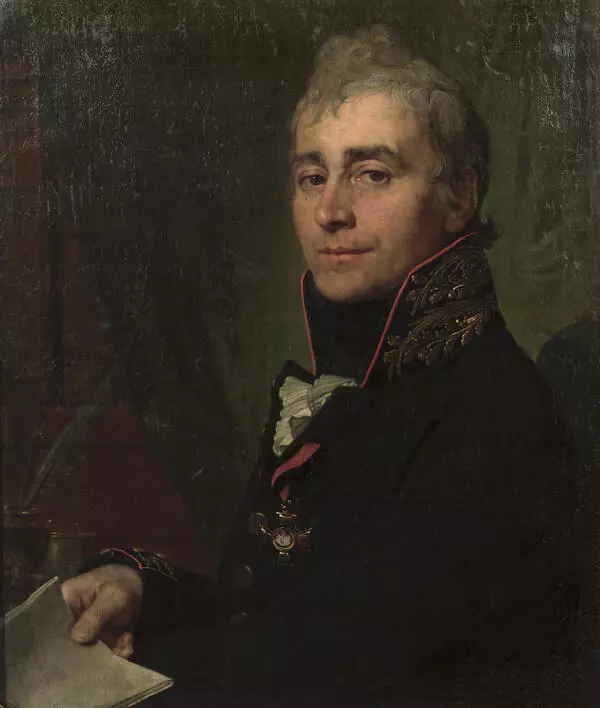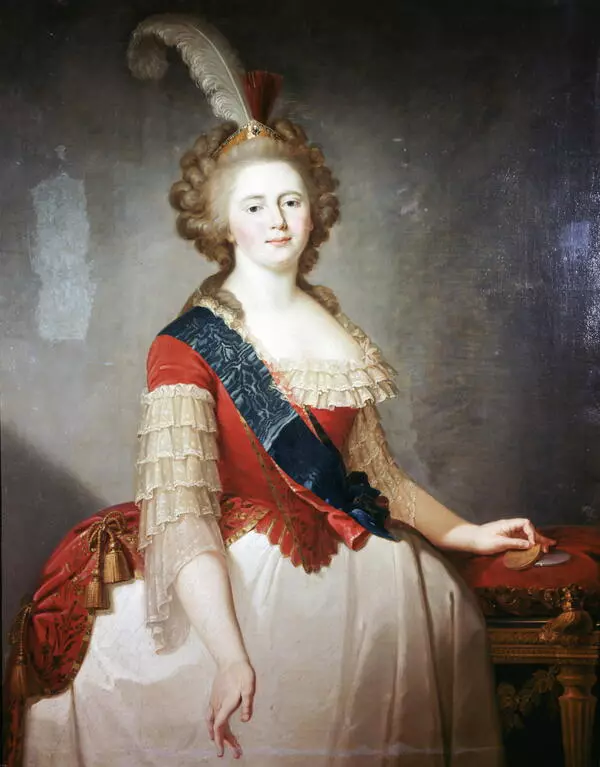Vladimir Borovikovsky created the portrait of the Empress Maria Fyodorovna for the residence of Paul I — the Gatchina palace; then the portrait was moved to the Emperor’s study in the new suburban palace in Pavlovsk. Maria Fyodorovna, after the end of the mourning for her famous mother-in-law Catherine the Great, had to wear a restrained outfit for half a year — the uniform dress of a Chevalier Guard, and this is how she was depicted in this portrait. She was the patron of the most prestigious regiment of the guards, where only the sons of high nobility could serve. The museum palace in Pavlovsk keeps the unfinished portrait of Maria Fyodorovna. These two pieces look similar, but in the unfinished portrait the hair is styles more freely and the smile is more open — the artist was painting from life and he conveyed the state of mind of the Empress as more vivid versus the official finished portrait. That is why, with great probability we can say that the portrait in Pavlovsk was created prior to the one we have in Tyumen.
Vladimir Borovikovsky was a master of costume details. He thoroughly conveyed the brilliance of diamonds in the order of St. Andrew “The First Called” and of the St. Catherine Star, the play of hues on the blue silk St. Andrew ribbon, the delicacy of tender lace on the neck of the dress. The sky with pinkish clouds in a haze constituting the background and the fading contour of the head are painted with light brisk strokes. The artist emphasized the dignified poise, the beautifully jerked up head and the despising glance. The arms of the Empress look a little bit like waxwork. This rigidness of the figure may be explained by the fact, that the head was painted from life, while as the rest of the portrait was finished in the artist’s studio. The monarchs did not like to spend a lot of time posing. Artists often created their portraits based on one preferred standard, and the décor (the dress, the sceptre, the baton and the mantle were sent to the studio, where dresses were put onto mannequins. According to the researchers, Borovikovsky painted Maria Fyodorovna as a companion portrait to the one of Paul I, which is currently located in Sumy, the city in Ukraine. Both are half-length portraits, both have cloudy skies as a background. If we put the portrait of Maria Fyodorovna to the left of the Emperor’s portrait from Sumy, her figure will be slightly turned away from her husband, but her head will be looking at him. Borovikovsky used such pivot turns in his companion portraits quite often.
Vladimir Borovikovsky was a master of costume details. He thoroughly conveyed the brilliance of diamonds in the order of St. Andrew “The First Called” and of the St. Catherine Star, the play of hues on the blue silk St. Andrew ribbon, the delicacy of tender lace on the neck of the dress. The sky with pinkish clouds in a haze constituting the background and the fading contour of the head are painted with light brisk strokes. The artist emphasized the dignified poise, the beautifully jerked up head and the despising glance. The arms of the Empress look a little bit like waxwork. This rigidness of the figure may be explained by the fact, that the head was painted from life, while as the rest of the portrait was finished in the artist’s studio. The monarchs did not like to spend a lot of time posing. Artists often created their portraits based on one preferred standard, and the décor (the dress, the sceptre, the baton and the mantle were sent to the studio, where dresses were put onto mannequins. According to the researchers, Borovikovsky painted Maria Fyodorovna as a companion portrait to the one of Paul I, which is currently located in Sumy, the city in Ukraine. Both are half-length portraits, both have cloudy skies as a background. If we put the portrait of Maria Fyodorovna to the left of the Emperor’s portrait from Sumy, her figure will be slightly turned away from her husband, but her head will be looking at him. Borovikovsky used such pivot turns in his companion portraits quite often.
